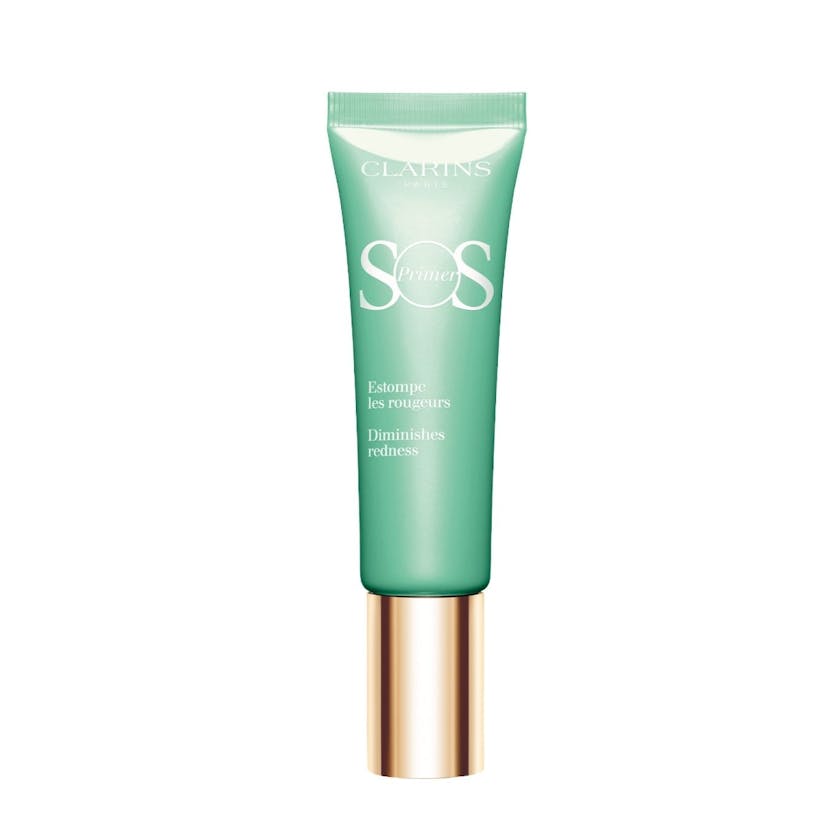Red Marks On The Skin – How To Tackle Them From A Doctor & Make-Up Expert
6 minutes read
We can all agree that red marks on the skin can be super annoying, especially when you don’t know what’s causing them. All sorts of things can set them off, from incompatible skincare and a weak skin barrier to undercover allergies and skin conditions. To help you solve this mystery, we have listed some of the most common causes of red marks on the skin. Plus, aesthetic doctor Dr Paris Acharya & our in-house make-up expert share their top tips to tackle them.
What do red marks on the skin mean?
It depends on what is causing them. Many red marks are superficial, like scarring from acne and stretched blood vessels from sun exposure. However, red marks can also be a cry for help from our bodies, telling us that something isn’t quite right.
We have listed some of the most common causes of red marks on the skin below, focusing on dermatological issues. However, if you think your red marks are caused by something more sinister, like a serious illness or infection (e.g., if they bleed or change shape), you must contact your GP or healthcare provider.
PS It’s worth noting that spots or patches can look different on different skin tones. For example, people with fairer skin tend to get more pink and red marks whereas darker-skinned people usually have brown, black and purple marks.

Causes of red marks on the skin
Acne
Hurrah! Your acne is finally gone. But, hold on, what are these red marks left behind? Sometimes, acne leaves scars and marks that last longer than your average breakout.
Acne scars
Acne can leave scars, especially the more severe types like cystic acne. Common types of acne scars include:
- Icepick acne scars, which are deep, narrow, and usually caused by infected pores or cysts
- Boxcar acne scars, which are ‘boxier’ with well-defined contours and are sometimes referred to as ‘pitted skin’
- Rolling acne scars, which are usually up to 4-5mm long pits that look a little like waves on the skin
Acne scars are pretty stubborn and don’t tend to budge on their own, which is why there are so many treatments to help you out. Ask your GP or a dermatologist for more information.
Post-Inflammatory Erythema (PIE)
Post-inflammatory erythema (PIE) are red, pink, or purple patches caused by inflammation, damage, or dilation of the small blood vessels underneath the skin. It usually fades away on its own eventually, but there are treatments out that you can try, like topical creams and procedures like laser surgery.
Sun damage
Spending too much time in the sun leaves permanent damage, we all know that, but did you know it could be behind red marks on your face? The Mayo Clinic suggests that UV rays can “stretch small blood vessels and leave your skin looking mottled and reddish”.
Rosacea
Clusters of small pimples or bumps on the face can signify rosacea. This skin condition causes redness (which can look and feel like extreme blushing), irritation, and minor red marks. Alcohol, UV light, harsh chemicals, and spicy food can trigger it. The root cause is unknown, but there are treatments out there you can try – ask your GP.
Read Next: Do You Have Rosacea? Here’s Your Treatment Plan
Eczema
Atopic dermatitis is the most common type of eczema. It’s itchy and painful, causing red, dry, and cracked skin patches. The cause is unknown, but doctors typically prescribe medicated creams and tell you to keep your skin as moisturised as possible.

Other skin conditions
There are lots of skin conditions that can cause red marks on the skin, including:
- Heat rash (miliaria): red / skin-coloured bumps from heat rash are caused by blocked pores that trap sweat inside, usually accompanied by itchiness and soreness.
- Cherry hemangiomas: aka. Cherry angiomas are small, round red or purple skin growths made up of blood vessels. They are most common in adults over 30 and typically appear on the legs, arms, and scalp.
- Contact dermatitis: an inflammatory skin disease caused by irritants, e.g., strong cleaning products or allergens coming into contact with your skin. The raised, itchy, red (or flesh-coloured) marks you get from this disease are referred to as hives (uticaria).
- Keratosis pilaris: a harmless skin condition that causes the body to produce too much keratin. This causes small, hard, red/pink bumps around hair follicles, commonly seen on the upper arms, thighs, and buttocks.
- Psoriasis: can cause red, itchy, scaly patches all over the body, particularly the scalp, elbows, and knees. The skin cells of people with psoriasis grow faster than usual, which causes this thick and uncomfortable buildup.
- Pityriasis rosea: produces a red rash, usually in the shape of an oval-shaped Christmas tree – how festive! This large ‘mother patch’ first appears on the trunk of the body, and then smaller ‘daughter patches’ can be found on other areas. These patches are sometimes scaly, with a ringworm-like raised border.
- Ringworm: aka. tinea corporis, shows up as a blotchy round red mark on the skin with a distinguishing raised border. It’s caused by a fungus infection, can show up anywhere on the body, and is highly contagious until the fungus is killed. So get it checked out by a doctor ASAP.
Skin Infections
As well as ringworm, there are many other bacterial and viral infections that can cause red marks on the skin, including:
- lichen planus
- chickenpox / shingles
- rubella
- meningitis
- MRSA
- scarlet fever
- boils
If you suspect you have a skin infection, you should contact your healthcare provider.
Can stress cause red marks on the skin?
Yes, stress can cause stress rash, which can stress you out even more – fun! It often takes the form of hives, which we mentioned above, tend to be swollen, raised, and itchy.
Read Next: What’s The Deal With Your Itchy Skin At Night? Find Out Here
Reduction and Prevention
How to reduce red marks on the skin
Some red spots and patches can be improved with simple skincare swaps, especially those associated with dry skin. However, Dr Acharya says the focus should be on “restoring your skin’s barrier function and using calming products to help reduce redness.”
When it comes to skincare ingredients, she recommends that you:
“Search for calming, anti-inflammatory and hydrating products containing key ingredients like niacinamide, ceramides, hyaluronic acid and azelaic acid, among others, and avoid potential irritants such as exfoliating acids, retinol and vitamin C.”
To help prevent red marks on the skin, you must avoid picking at them or any other spots you get, however strong the urge may be. Dr Acharya also recommends azelaic acid for acne-related redness, which is “great for reducing pigmentation as well as helping with breakouts.”
Always do a patch test when trying new skincare and introduce it gradually into your routine if you don’t have a bad reaction. And, if your skin doesn’t improve over time or worsens, you may want to speak to a doctor or dermatologist.
Read Next: How To Tell If You Have Damaged Skin Barrier And Ways To Fix It
How to cover red marks on the skin
A colour-correcting primer before you put on make-up can help neutralise even the rosiest red marks. Charlotte McHale, Clarins Training Manager, recommends using a green colour corrector such as our SOS Primer in Green , £28.50:

“Popping this on beneath any concealer or skin-toned coverage will help hide the redness completely, whilst using it alone will diminish the redness giving a generally more even appearance.”
How to remove red marks on the skin
Want them gone for good? Some red marks can be removed through surgical and non-surgical procedures, but it depends on the underlying cause. Your best bet is to contact a dermatologist or your GP and discuss what could work for you.
Sign up for our newsletter
We will keep you in the loop for special offers, exclusive gifts and product news.

